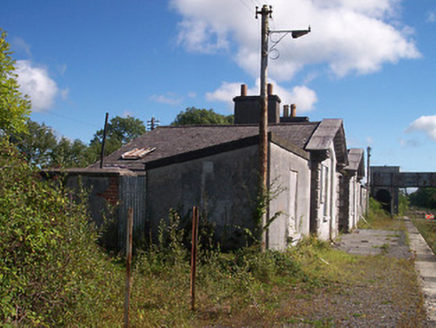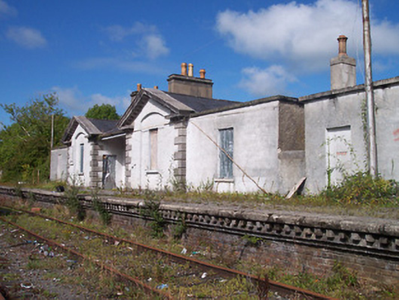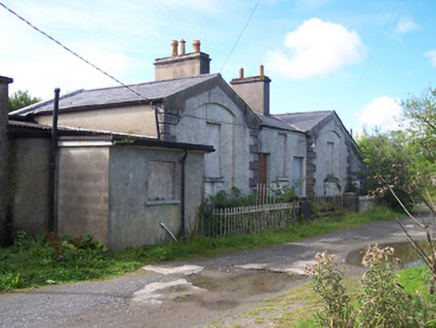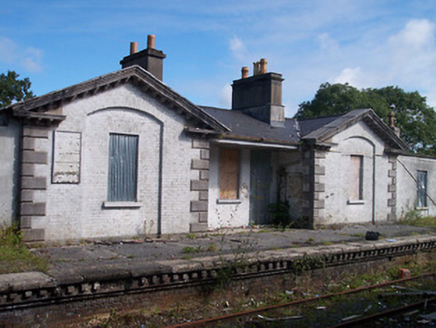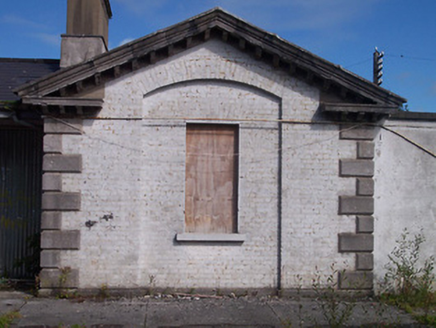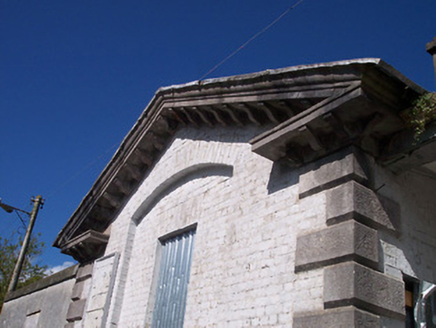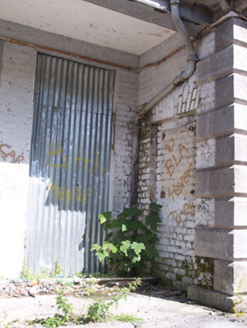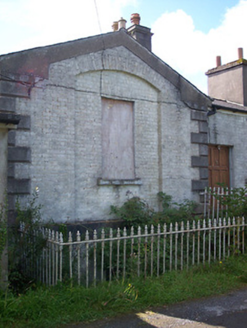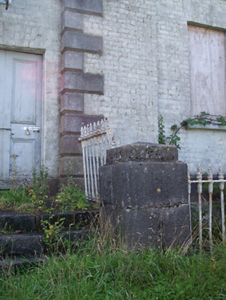Survey Data
Reg No
15317037
Rating
Regional
Categories of Special Interest
Architectural, Artistic, Social
Original Use
Railway station
Date
1850 - 1860
Coordinates
218376, 238804
Date Recorded
02/09/2004
Date Updated
--/--/--
Description
Detached three-bay single-storey former railway station, built c.1851, having advanced gable-fronted bays to either end (west and east), an open veranda/recessed shelter to the centre and single-bay single-storey extensions to the end elevations (east and west). Now disused. Pitched natural slate roofs with clay ridge tiles and with two central rendered chimneystacks having terracotta pots over. Cut stone broken pediments having cut stone brackets to advanced bays. Cast-iron rainwater goods. Constructed of brick over cut stone plinth with raised rusticated dressed stone quoins to the corners. Square-headed window openings to platform elevation, set in recessed segmental-headed arches, windows now blocked. Square-headed doorway to recessed shelter, door now blocked. Square-headed doorway to the north elevation (entrance) having a replacement timber panelled door. Doorway reached by flight of cut stone steps flanked to either side by an ashlar plinth wall with cast-iron railings over and terminated by dressed limestone piers (on square-plan). Sections of cast-iron railings to either side of flight of steps. Platforms to either side of track having brick construction with decorative brick corbel course and cut stone coping over. Located to the north of Moate.
Appraisal
An appealing, well-built and elegant mid nineteenth-century railway station, representing an important element of the transport and civil engineering heritage of County Westmeath. This station was originally built by the Midland and Great Western Railway Company to serve the Mullingar to Galway line, which opened 1851 and closed in 1987. Built of brick with extensive high quality cut stone dressings, this building reflects the former wealth and ambitions of the railway company and the level of architectural design that often went into the most modest of rural stations. This building has some notable classical detailing, including bracketed broken pediments to the advanced bays and the good quality rusticated quoins to the corners. It is possible that the renowned architect J.S. Mulvany, who was responsible for the designs of a number of the train stations along this line, including that in Athlone (15004151), was also responsible for the designs to this station. This fine building, unfortunately no longer in use and in danger of dereliction, is a notable example of its type and forms the centerpiece of a good quality collection of related structures at Moate. The railway platforms complete the setting. The cattle sidings to the west side of the station are an interesting historical reminder of the importance of Moate as a regional market centre.
